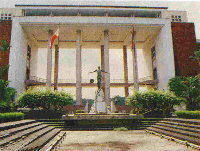
University of the Philippines
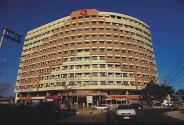
Century Imperial Palace Hotel
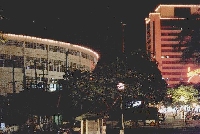
Aranete Colleseum
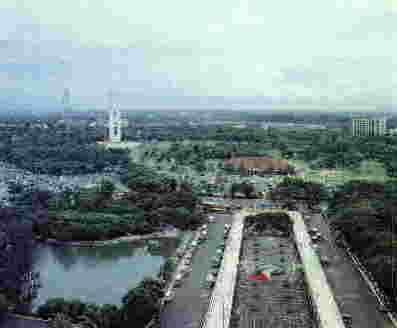
Quezon City Circle
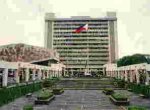
Quezon City Hall
| |
VISIT QUEZON CITY
Philippines Entertainment Capital
Quezon City was conceived in a dream of a man incomparable - the late President Manuel Luis Quezon. He envisioned a place where the common man will find his place with dignity. In 1938, President Quezon purchased 1,529 hectares from the vast Diliman Estate of the Tuason Family. The following year, the National Assembly enacted the Commonwealth Act otherwise known as the Charter of Quezon City. On October 12, 1939, President Quezon signed the Bill into law, thus the city was born. Progress in Quezon City continued until the outbreak of World War II in 1941. Seven years later, by virtue of Republic Act No. 333 signed on July 17, 1948, Quezon city officially became the capital of the Philippines and the permanent seat of the national government. Its inauguration as capital city was marked by the laying of a cornerstone for a capitol building at Constitution Hills on October 22, 1949. Subsequently, construction of government building began. On June 16, 1950, the City Charter was revised by Republic Act No. 537 which extended its boundaries to its present area of 15,359 hectares or five (5) times bigger than the City of Manila. It lost its title as capital city of the Philippines to Manila by virtue of Presidential Decree No. 940 on June 24, 1976.
Although some quarters may observe that Quezon City today may not be what its founder had conceived it to be, the efforts made by the past administrations up to the time of incumbent Mayor Ismael A. Mathay, Jr. accelerated toward the development and promotion of the city's tourism potentials, is a great stride towards the realization of the late President Quezon's vision.
Quezon City is the biggest of the six cities in the Metro Manila Area, lying immediately northeast of Manila and straddling the northern extension of the Guadalupe plateau. This strategic location provides stable ground foundation, adequate surface drainage, deep water table, and ample ground water supply. It is an area of moderate slopes and the most common soil type is the hard loam, more popularly known as the adobe which was heavily used in construction in the past.
In terms of land area, Quezon City is the second biggest in the country, being next in size to Davao City.
The expanse of business and economic avtivities denote the over-all affluence of the community. Although insofar as land use is concerned, Quezon City stands out as a residential area, the commercial and industrial land use index indicates great potentials for business and economic activities. For one thing, there is still a lot of open spaces which may easily be transformed into shopping malls, industrial or housing-cum-industrial estate complexes. At the same time, part of these open areas may be converted into skills training and manpower development centers in order to ensure skills availability for an emerging commercial-industrial metropolis.
The great majority of business enterprises in Quezon City are small, marginal, mostly family-owned undertakings. Thus, the city government provides business assistance to these small enterprises, particularly int the areas of financing, quality control, and improved production processes. Likewise, with the sustained partnership between the local government and business sector, the economic climate is ensured to be conducive to business and investments initiation, development and expansion.
There are always significant events in the birth, growth, and continuing development of a metropolis. In the case of Quezon City, these strides are closely identified with the vision of President Quezon for a national capital and the seat of the national government. Now, after about 60 years after its birth Quezon City stands as the national capital and as seat of many of the offices in the national government. It is vibrant metropolis, throbbing with the many-faceted life of a dynamic metropolis. It is emerging as the residential center, a commercial center, as the seat of the national government, and as a growing financial center.
There are many historical landmarks in Quezon City, among which may be counted the San Pedro Bautista church in San Francisco del Monte, the second oldest church in the country; the site of the unang sigaw (first cry) in the Balintawak area to mark the start of the Philippine revolution against Spain; the monument to Gen. Lawton, the pot where the U.S. general was killed by katipuneros in battle after the Pact of Biak-na-Bato failed in its objective to stop the hostilities even continued after the Treaty of Paris which ended the Spanish-American war and wherein the Philippines revolutionary forces continued the war of independence against America.
|
